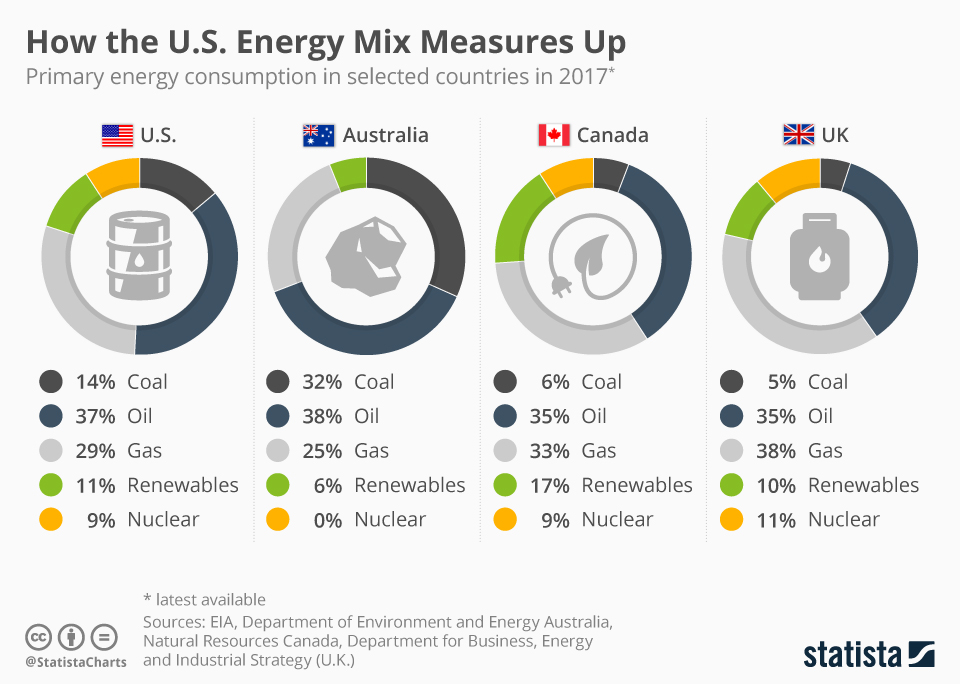What is the US energy strategy?

The US energy strategy plays a crucial role in shaping the nation's energy policies and priorities. It encompasses a wide range of initiatives and goals aimed at ensuring a reliable, secure, and sustainable energy future for the country. In this article, we will explore the key components of the US energy strategy and its implications.
- The Importance of US Energy Strategy
- Key Components of US Energy Strategy
- Renewable Energy Initiatives and Goals
- Support for Fossil Fuels and Natural Gas
- Energy Efficiency and Conservation Efforts
- Energy Infrastructure and Grid Modernization
- International Energy Relations and Diplomacy
- Environmental Considerations and Climate Change
- Challenges and Criticisms of US Energy Strategy
- Conclusion
- Frequently Asked Questions
The Importance of US Energy Strategy
The US energy strategy is of paramount importance as it directly impacts the nation's economic growth, national security, and environmental sustainability. It helps in diversifying the energy portfolio, reducing dependence on foreign sources, and promoting domestic energy production.
Key Components of US Energy Strategy
The US energy strategy comprises various components that work together to achieve its overarching goals. These components include renewable energy initiatives, support for fossil fuels and natural gas, energy efficiency and conservation efforts, energy infrastructure and grid modernization, international energy relations and diplomacy, and environmental considerations and climate change mitigation.
Renewable Energy Initiatives and Goals
The US government is committed to promoting renewable energy sources such as solar, wind, hydro, and geothermal power. It aims to increase the share of renewable energy in the overall energy mix and reduce greenhouse gas emissions. This is achieved through incentives, tax credits, research and development, and the deployment of renewable energy technologies.
Support for Fossil Fuels and Natural Gas
While renewable energy is a priority, the US energy strategy also acknowledges the significance of fossil fuels and natural gas in meeting the country's energy needs. The strategy focuses on responsible extraction, reducing carbon emissions, and investing in clean coal technologies. It recognizes the role of natural gas as a transitional fuel towards a low-carbon future.
Energy Efficiency and Conservation Efforts
Energy efficiency and conservation play a vital role in the US energy strategy. The government encourages energy-efficient practices in industries, buildings, and transportation. It promotes energy-saving technologies, appliances, and building codes to reduce energy consumption and lower greenhouse gas emissions.
Energy Infrastructure and Grid Modernization
The US energy strategy emphasizes the modernization of energy infrastructure and the grid. This includes upgrading transmission and distribution systems, integrating renewable energy sources, and implementing smart grid technologies. The goal is to enhance reliability, resilience, and flexibility in the energy sector.
International Energy Relations and Diplomacy
The US engages in energy diplomacy to strengthen international energy relations. It collaborates with other countries to ensure energy security, promote sustainable development, and address global energy challenges. The strategy involves diversifying energy sources, enhancing energy trade, and facilitating technology transfer.
Environmental Considerations and Climate Change
The US energy strategy recognizes the importance of addressing environmental concerns and mitigating climate change. It supports the Paris Agreement and aims to reduce greenhouse gas emissions. The strategy includes investments in clean technologies, carbon capture and storage, and initiatives to transition to a low-carbon economy.
Challenges and Criticisms of US Energy Strategy
Despite its ambitious goals, the US energy strategy faces challenges and criticisms. Some argue that it does not go far enough in transitioning away from fossil fuels and addressing climate change. Others criticize the level of government support for certain energy sectors. Balancing economic interests, environmental concerns, and energy security is a complex task.
Conclusion
The US energy strategy plays a pivotal role in shaping the nation's energy landscape. It aims to achieve a sustainable, secure, and diversified energy future through a combination of renewable energy initiatives, support for fossil fuels, energy efficiency measures, infrastructure modernization, international cooperation, and environmental considerations. However, the strategy is not without its challenges and criticisms, highlighting the need for ongoing evaluation and improvement.
Frequently Asked Questions
1. What is the main objective of the US energy strategy?
The main objective of the US energy strategy is to ensure a reliable, secure, and sustainable energy future for the country. It aims to diversify the energy portfolio, reduce dependence on foreign sources, promote domestic energy production, and address environmental concerns.
2. How does the US promote renewable energy?
The US promotes renewable energy through various initiatives and incentives. These include tax credits, research and development funding, grants, and loan programs. The government also encourages the deployment of renewable energy technologies and supports the growth of renewable energy industries.
3. What role does fossil fuel play in the US energy strategy?
While the US energy strategy emphasizes renewable energy, it acknowledges the role of fossil fuels in meeting the country's energy needs. The strategy focuses on responsible extraction, reducing carbon emissions, and investing in clean coal technologies. Natural gas is also recognized as a transitional fuel towards a low-carbon future.
4. How is the US addressing climate change through its energy strategy?
The US is addressing climate change through its energy strategy by investing in clean technologies, supporting renewable energy deployment, and reducing greenhouse gas emissions. The strategy includes initiatives for carbon capture and storage, energy efficiency, and transitioning to a low-carbon economy. The US also participates in international climate agreements and collaborations.

Leave a Reply